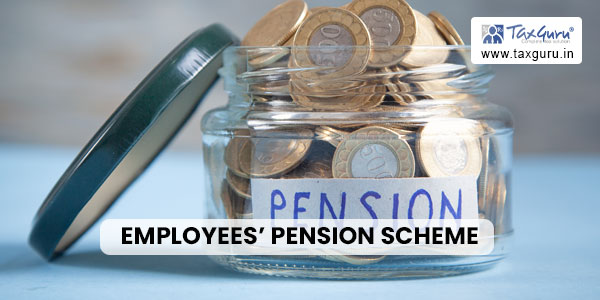As India’s workforce expands, understanding pension schemes becomes crucial. Explore the various public and private sector pension schemes, like EPF and NPS, offering financial security in retirement. Public sector schemes, like EPF, require monthly contributions, providing withdrawal flexibility. The National Pension System (NPS) caters to citizens above 18, offering tax benefits and lump-sum withdrawals post-maturity. Private sector pension plans, such as LIC’s Employee Pension Scheme 1995, offer diverse benefits, including tax exemptions. Eligibility criteria vary, and pension schemes offer financial security, tax advantages, and additional features like death benefits. Employers’ contributions enhance talent retention and long-term stability. Understand these schemes for informed retirement planning.
As the Indian workforce continues to grow, it is increasingly important for employees to understand their rights and benefits when it comes to pensions. In India, there are various pension schemes offered by both public and private organizations that provide financial security in retirement. This article will explore the different types of employee pension schemes available in India, as well as their eligibility criteria and associated benefits.

Page Contents
What is a Pension Scheme?
A pension scheme is an arrangement through which employees can save money throughout their working life and use it to support themselves during retirement. It offers individuals the opportunity to accumulate savings over time so that they are able to maintain a reasonable standard of living after leaving the workforce. In India, there are two main types of pension schemes: public sector schemes and private sector schemes.
Public Sector pension Schemes in India
The Employees’ Provident Fund (EPF) is one of the most commonly used public sector pensions in India. This scheme was established by the Indian Parliament in 1952 with the intention of providing financial security for workers who retire from government service or other public-sector organizations. The EPF requires employers and employees to contribute 12% of wages each month towards a fund managed by an independent body called the Employees’ Provident Fund Organization (EPFO). Any interest earned on this fund will be shared equally between the employer and the employee upon retirement. Additionally, members may withdraw up to 90% of their accumulated balance at any point during employment or after retirement if necessary due to medical or economic hardship.
Other than EPF, the government also provides the National Pension System (NPS) which is applicable for all citizens above 18 years of age, including employed people as well as self-employed professionals like doctors and lawyers, etc. Contributions are made either monthly, quarterly, half-yearly, or yearly basis into individual accounts opened with NPS Trust until they reach the age limit of 60 set by the government. Post-maturity, a lump sum amount and annuity can be taken out from the NPS corpus subject to certain conditions and tax benefits under Section 80CCD(1B), 80CCD(2), and 10(11AA).
Private Sector pension Schemes in India
In addition to public sector pension schemes, many private companies also offer their own pension plans for their employees. These plans vary widely depending on company policy but typically involve both the employer and the employee contributing funds into an account that will grow over time until retirement age when it can be withdrawn as income or used as capital investment for future income generation purposes, such as starting a business or buying property. Examples include the Employee Pension Scheme 1995 offered by Life Insurance Corporation of India (LICI), Kotak Mahindra Old Mutual Life Insurance Company Limited’s Retirement Savings Plan, and Birla Sun Life Insurance Company Limited’s Group Superannuation Benefit Plan, among others, which provide benefits such as tax exemptions under section 80 CCD 1b, 80 CCCD 2, etc., along with additional features like accidental death cover. The terms vary across different providers, so it is important for potential customers to compare them carefully before making any decisions about investing in them.
Eligibility Criteria for Pensions in India
Employees must meet certain criteria before they can qualify for any type of pension scheme available in India. These include minimum length of service requirements, age limits, and other restrictions. Generally speaking, public sector pension schemes are open to all employees of government or public-sector organizations, while private sector plans may have more stringent eligibility criteria depending on the scheme provider.
Benefits of Pension Schemes in India
Pension schemes provide a number of benefits for both employers and employees. Firstly, they offer financial security in retirement as individuals can accumulate savings over time, which can then be used to support themselves during their post-working life. Secondly, they provide tax advantages as contributions into these funds are usually eligible for deductions under certain sections of the Income Tax Act 1961, such as Section 80 CCD 1b, 80 CCCD 2, etc. Thirdly, some pension schemes also offer additional features such as accident cover and death benefit payments, which can help protect families from financial hardship in the event of an untimely death or disability. Lastly, employer contributions towards employee pensions can help attract and retain talent within the organization by providing a valuable incentive that is not only attractive but also provides long-term stability for workers.
Conclusion
Employee pension schemes are an important part of any workforce’s benefits package in India. They provide financial security in retirement, along with numerous other advantages such as tax exemptions and additional coverage options, that make them attractive to both employers and employees alike. It is therefore essential for potential contributors to understand their rights when it comes to pensions so that they can make informed decisions about how best to save money throughout their working life in order to secure a comfortable future after leaving the workforce.




